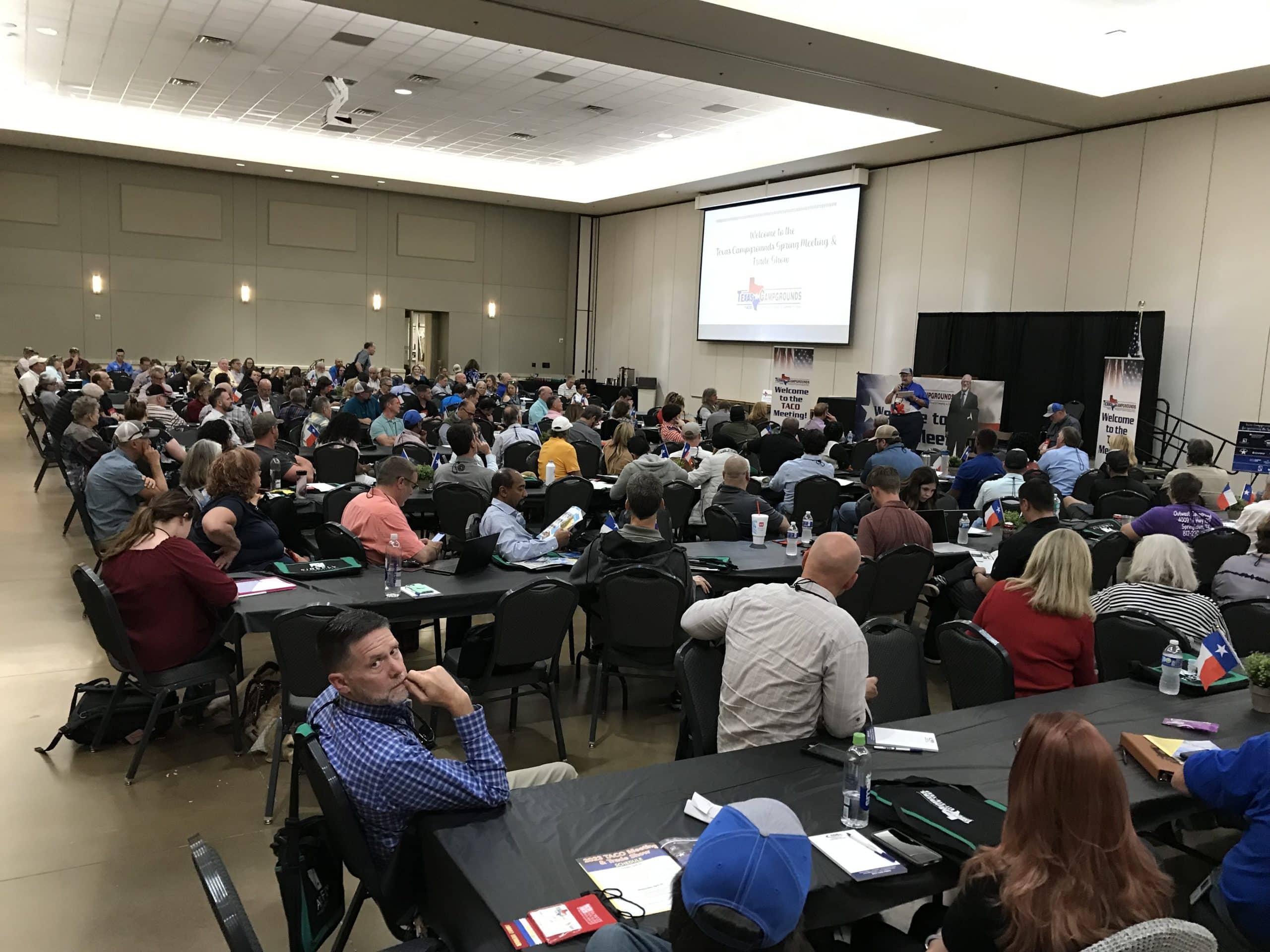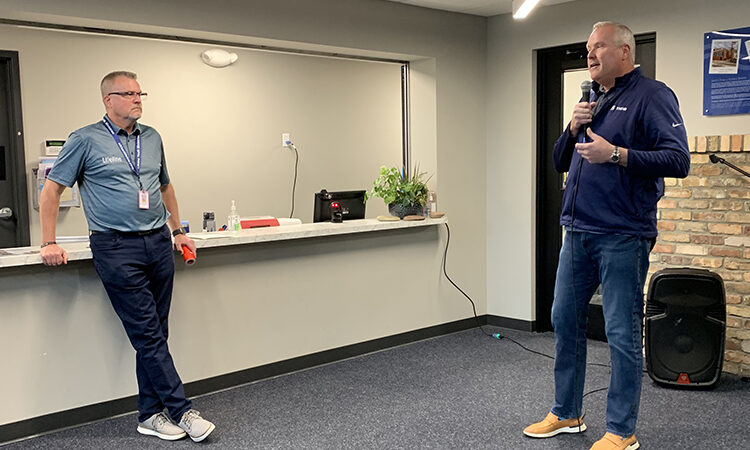Texas Park Association Wraps Record Convention

Record numbers of current and aspiring park operators attended the Texas Association of Campground Owners’ annual Spring Meeting & Trade Show at the Lone Star Convention Center in Conroe, Texas.
If anyone needs convincing about the current strength and growth potential of the campground and RV park business, the recent Spring Meeting and Trade Show of the Texas Association of Campground Owners (TACO) was certainly a good indicator.
TACO’s April 25-26 convention at the Lone Star Convention Center in Conroe, Texas, had nearly 400 attendees, including 225 representatives from campgrounds and 165 vendor representatives from 76 exhibitors, the largest in TACO’s 51-year history, according to Brian Schaeffer, TACO’s executive director and CEO.
“The tradeshow was up 40%, but overall we are up about 25% (in Spring Meeting attendance),” Schaeffer said.
As the meeting kicked off, Schaeffer asked for a show of hands indicating how many people had never attended a TACO show before and numerous hands went up. Schaeffer received a similar response when he asked how many attendees were planning to develop or purchase a park.
Convention speakers, for their part, provided Spring Meeting attendees with lots of practical advice on ways to build, operate, manage and market their parks.
Seminar speakers frequently challenged current and aspiring park operators to think out of the box. Private park operators often worry about charging too much for their campsites. But the most expensive RV sites typically sell out first if they have top-notch amenities, according to Jayne Cohen, of Campground Consulting Group, who joined Terry Munoz, of The Signorelli Company, in The Woodlands in a seminar on RV park development.
Start with a couple of RV sites in a nice location and upgrade them with 10- by 20-foot patios and outdoor kitchens and barbecues, Cohen said. “Don’t be afraid to try extras,” she said, noting that Margaritaville RV Resort in Auburndale, Fla. even has different levels of outdoor kitchens at its RV sites.
Cohen also urged park operators to pay attention to the basics, like the restrooms.
“Are they outdated?” she asked. “Do they smell fresh? Are the nooks and crannies clean?”
Cohen also offered a solution for park operators who know they have specific amenities or fixtures in their parks that obviously need attention. She showed a photograph of a sign next to the object or area that needs attention that says “Yes! I am on the fixit list!” While humorous, such signage also indicates to guests that management cares about the issue and is planning to take care of the problem.
Cohen also recommended that park operators set guidelines or “site appearance rules” for extended stay guests, while showing photos of RVers with messy campsites to emphasize her point. Cohen also suggested that park operators themselves offer to install decks around their extended stay RVers, if they desire such add-ons, to help maintain better park appearances. This also gives the park operator a chance to make money by providing such services.
“Give them choices,” she said.
And when it comes to park models, Cohen said, be sure to install skirting around the base of each park model or at least have nice landscaping around the base.
Cohen also encouraged park operators to consider tent campers, noting that tent sites should be priced as high as RV sites because of the amenities that many of today’s tent campers require, such as electrical connections, Wi-Fi and places to wash dishes. She noted that some Kampgrounds of America (KOA) tent sites have outdoor kitchens.
“If you look at the data,” Cohen said, “you will find it’s a lot of families that camp. You’ll find their income level is higher and, because they are in a tent, they need to buy a lot of (items) from your store.”
Cohen noted that when she studies the feasibility of developing RV parks, she conservatively estimates that 6% to 8% of households own an RV. She added that the “sweet spot” for each park’s market is a geographic circle roughly 150 miles from the park’s location.
Cohen cautioned developers to be careful with their estimates on how many sites they can really develop. Each developable acre should have no more than six or seven RV sites per acre, she said. But not every acre may be developable, she said, noting that sections of properties with slopes exceeding 10% may be too expensive to develop. As a result, she said, the area of developable land for RV sites may be smaller than what the developer initially envisioned.
You can read more from the conference here:
Source: https://rvbusiness.com/texas-park-association-wraps-record-convention/






